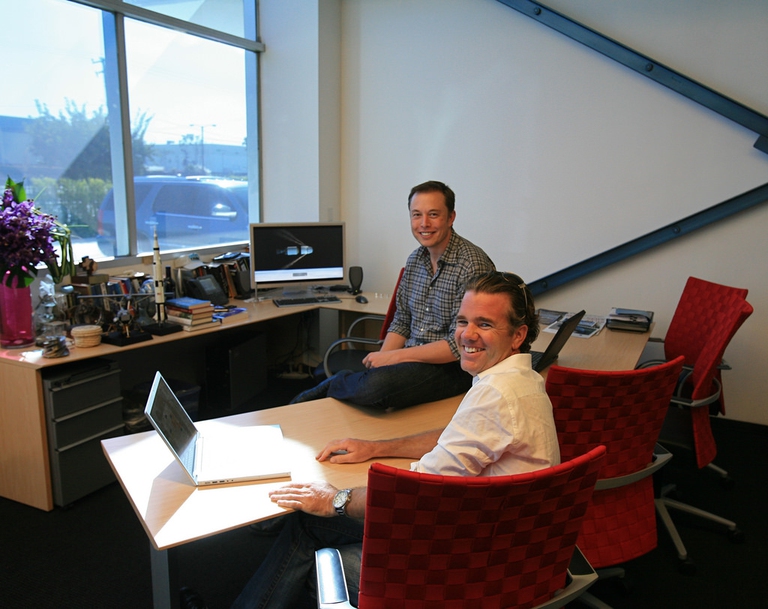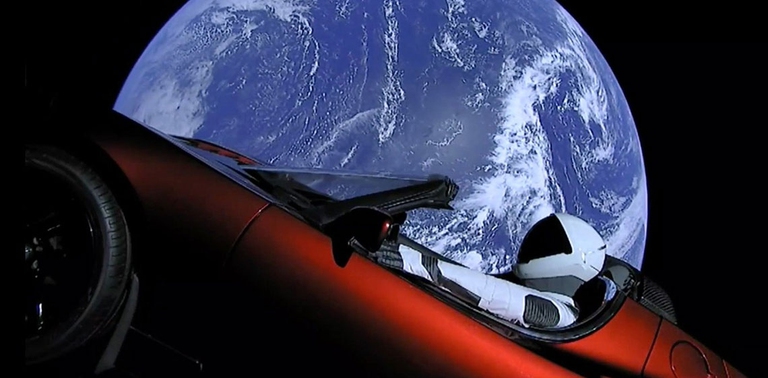
A group of experts in Tokyo suggested pouring radioactive water from Fukushima into the open sea. A marine biochemist explains the consequences of this absurd decision.
Elon Musk is one of the most influential and pragmatic figures of our time. He is changing transportation and energy forever. Here’s the biography of the man who wants to take us to Mars.
Elon Musk was born on the 28th of June 1971 in Pretoria, South Africa, from the Canadian Maye Haldeman and the South African Errol Musk. Today he is considered one of the brightest minds of the 21st century; his business projects, Tesla and SpaceX show he is a skilled businessman as well as his vision of the future, the vision of the man who is considered one of the most influential young billionaires on the planet by Forbes magazine. His companies and many of his ideas, considered almost impossible to carry out, brought him to the big screen: it’s quite easy to find analogies with the character of Iron Man, inspired by the life of the South African inventor, naturalized American citizen.
Elon Musk shows a great interest in programming from a very young age, he creates his first program at the age of 10, using Basic, one of the first softwares used by anyone who grew up in the 80’s; at the age of 12 he sells his first video game: Blastar. A sort of Space Invaders, where a spaceship destroys enemy spacecraft using hydrogen bombs.
After the divorce of his parents, Musk spends his youth in South Africa with his father; in 1989 he moves to Canada and attends Queen University, and ends his studies in the United States at Pennsylvania University where he earns degrees in physics and economics. He wins a scholarship at Stanford University, but choses San Francisco, the future birthplace of Silicon Valley. It is the very beginning of the world wide web, the internet. Search engines like Yahoo! and Netscape were born during those years, and the first bits started moving on the web. Here comes his first intuition: creating a list of businesses located in a digital map that would then be sold to editors. He founded the Global link information network with his brother Kimbal, a start up company that would then be renamed Zip2 after the New York Times and the Chicago Tribune decided to buy the service. Compaq saw the potential in this idea and decides to buy Zip2 for 307 million dollars and 34 million in stock options in 1999. This is Elon Musk’s first great success in the business world.
But Elon Musk’s great step forward comes from online financial services, especially because of the effect his creation will have on our everyday lives. He co-founds X.com in 1999, a sort of online bank that would soon become Paypal, one of the most used and famous online payment methods in the world. The platform works perfectly, so much so that Ebay decides to buy it in 2002. Paypal closed the fourth trimester of 2016 with a 367 million dollar profit, a 26 per cent increase from the previous year.
One of Elon Musk’s biggest dreams is space exploration. He underlined this aspiration during his interview with LifeGate for the opening of the first Tesla shop in Italy, in the city of Milan. Musk never hid his desire to bring man to Mars before the end of the century. During the Guadalajara Astronautical Congress, in Mexico, Musk said “What I really want to try to achieve here is to make Mars seem possible, like it’s something we can achieve in our lifetimes.” SpaceX was created in 2002, probably because of this dream. Musk becomes the world’s first owner of a space transportation company. In a way he also invented the first reusable rocket: The Falcon 9 – the rocket used to refuel the International Space Station and bring satellites into orbit- it can use the same engine for multiple launches and return to base without a pilot. The first step towards interplanetary travel: the Dragon capsule could soon become a cockpit and a mean to transport humans.
SpaceX truly revolutionised orbit transport with rockets. Rockets used to fall apart during the various launch phases, and only the landing module remained after its return through the atmosphere. Orbital transport has become much cheaper thanks to the Falcon 9. Musk declared that “At this point, I’m highly confident that it’s possible to achieve at least 100- fold reduction in the cost of space access. A completely reusable rocket has never been made before. Rapid and complete reusability of rockets is really the key to opening up space and becoming a space-faring civilization.” According to the entrepreneur the first human mission on Mars could realistically take place in 2022. We’re really close.
The internet and space exploration are only two of Musk’s intuitions. Another theme that fascinates him is energy. Especially what concerns renewable energy. This is why he created Tesla Motors in 2003, a car manufacturer that will revolutionise the idea of electric cars: the first Tesla Roadster was produced in 2008. A supercar that was able to reach 200 km/h. It immediately had great success even though it was very expensive both to build and to buy. It is no longer in production, but 2000 of these cars were made.
“we will not stop until every car on the road is electric”
-Elon Muskhttp://t.co/vHxOc564mb— Tesla Electric (@Tesla_Electric) 6 July 2014
It was obviously a toy that could be afforded by few people, but it allowed Musk to invest and create the first electric luxury sedan: the Model S. This car has beaten numerous records: more than 400 km range for the first model. The following model reached 900 km. It is also the first car with an autopilot and an integrated connection to the web. Tesla offers much more, since Musk’s idea is for electric cars to be accessible to everyone. After the futuristic Model X – a SUV with gull wing doors – Tesla recently created a compact car called Model 3. It costs around 30,000 euros, even though it will probably reach 50,000 after adding options. Musk promised that “We won’t stop until every car on the road is electric.” https://www.youtube.com/watch?v=RgpHPS7661M
Due to its connection with electric vehicles, the energy sector has always interested the American billionaire. This is why, after a few economic and legal issues, Musk was able to open the first Gigafactory in Nevada: a large production site for the lithium batteries Tesla uses in its cars and energy storage devices like the Powerwall. Musk is also thinking about Europe, and in 2016 he announced the construction of another production site for cars and energy storage systems: Gigafactory 2. He also said that he wants to create the most powerful lithium ion battery in the world.
Tesla to build ‘biggest battery’ https://t.co/Y5L8WTwLdy — BBC News (World) (@BBCWorld) 7 July 2017
His involvement with renewable energy doesn’t end here. He is also interested in systems for the production of renewable energy to create a complete process. Last year he opened Solarcity in the state of New York, the first plant that produces Tesla photovoltaic panels. In 2016, through an extremely successful media event, Musk launched solar roof tiles that can be fitted directly to houses. It is not something we had never seen before, but the South African billionaire’s ability to communicate made it worldwide news. Are there any projects for the future? Of course. Elon Musk is already working on the Hyperloop, a supersonic train that could change transportation forever.
Meanwhile tests continue on the supersonic train that should connect San Francisco to Los Angeles in just around 30 minutes. In August 2017 the train levitated for around half a kilometre, going just above 300 km/h. It is still very far from the 1,200 km/h it should reach when fully functional, but the main focus is currently on breaking and safety systems. Elon Musk posted a video of the Hyperloop’s astonishing acceleration.
On the 6th of February 2018 at the Cape Canaveral base in Florida the world’s most powerful rocket, Falcon Heavy, is launched into space. The sheer size of this rocket is impressive: 70 meters long, over 54 tonnes load capacity in low orbit and more that 22,000 in geostationary orbit. It was developed for the transportation of goods, but as Elon Musk himself said it could also be used to transport people.
The rocket was also designed to be used more than once, in fact the three boosters that were used to push the Falcon Heavy beyond the atmosphere returned to Earth in one piece. What was most amusing about this event, in addition to the implications for future space travel, was the rocket’s crew: a red Tesla Roadster driven by Starman, a dummy dressed like an astronaut that entered orbit with David Bowie’s Space Oddity as the soundtrack. It’s out there now, on the Van Allen belt, journeying towards Mars (where it will never actually land).
Elon Musk’s dream is the same as many other people’s: a world fuelled by renewable energy, where citizens become prosumers (they produce and consume at the same time) and travel without emitting any C02, and that maybe one day, they will be able to set foot on the Red Planet.
Siamo anche su WhatsApp. Segui il canale ufficiale LifeGate per restare aggiornata, aggiornato sulle ultime notizie e sulle nostre attività.
![]()
Quest'opera è distribuita con Licenza Creative Commons Attribuzione - Non commerciale - Non opere derivate 4.0 Internazionale.
A group of experts in Tokyo suggested pouring radioactive water from Fukushima into the open sea. A marine biochemist explains the consequences of this absurd decision.
A federal court in Washington, D.C. has struck down the Dakota Access Pipeline, following years of campaigning by the Standing Rock Sioux tribe.
The Scottish island of Eigg is self-sufficient for its energy needs, relying almost entirely on renewable sources, especially thanks to a coordinated community effort.
President Magufuli in unmovable in going ahead with the Stiegler’s Gorge dam despite conservationists’ warnings of the damage it will cause the Selous Game Reserve’s ecosystem and wildlife.
A large dam along the Luangwa River in Zambia would have posed a serious risk to local people and wildlife, leading hundreds of thousands to oppose it. A call to which the government responded by halting plans to build it.
The first one megawatt solar power plant in the Chernobyl exclusion zone has become operational. This is the first step in a renewable energy development project promoted by the Ukrainian government in the area.
A tanker exploded at a gas and petrol station in Nigeria’s Nasarawa state on the 10th of September, killing 35 people and leaving some burned beyond recognition; 3 citizens had several spine and brain injuries, 2 of them are still on Intesive Care Units. Fela Habila , a local singer, is now stable and out of danger but
The largest tidal power plant in the world will be built in the Larantuka Straits. It will serve 100,000 people and help overcome some of the challenges of energy provision in Indonesia.
Robben Island’s solar energy micro-grid project will produce almost one million kilowatt hours of electricity annually, significantly reducing the cost and impact of buying diesel.











